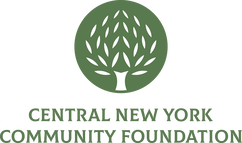The Central New York region is rich with history, dating back to a population boom during the industrial revolution. But along with that comes an aging housing stock that in many ways provides substandard living conditions for today’s residents.
The CDC considers an elevated blood lead level of over 3.5 mcg/dl in children is considered high lead exposure. However, any level of lead present is considered dangerous. According to the Onondaga County Health Department, 9.3 percent of Syracuse children tested in 2023 were shown to have levels over 5 mcg/dl.
The CDC considers an elevated blood lead level of over 3.5 mcg/dl in children is considered high lead exposure. However, any level of lead present is considered dangerous. According to the Onondaga County Health Department, 9.3 percent of Syracuse children tested in 2023 were shown to have levels over 5 mcg/dl.
Lead poisoning rates look even higher when you zoom in to analyze those census tracts that also report high levels of poverty and poor housing conditions. Within tract 23, which is located just north of Interstate 690 between Pearl and Lodi streets, 13.1 percent of children tested were shown to have elevated lead levels in 2023. Large refugee communities live in this neighborhood, which boasts a 24 percent foreign born population.
Census tract 54 is located in the Brighton neighborhood of Syracuse’s Southside and includes the immediate area around the Beauchamp Library. Here, a striking 36 percent of residents live below the poverty line. In this neighborhood, more than 11 percent of children tested had elevated lead levels.
The Black community of Syracuse is disproportionately impacted by lead poisoning, making this not only a health crisis but also a social, economic and environmental injustice. Across the country, Black and Latino neighborhoods have been found to exhibit extraordinarily high rates of lead toxicity compared to White neighborhoods and our region is no exception. In 2021, more than 11.6% of Black children in Onondaga County were found to have elevated lead levels compared to 2.0% of White children.
Decades of government legislation - such as redlining, covenants and discriminatory lending - segregated neighborhoods by race. This lead to generational poverty and many Black families in Syracuse not having access to safe, affordable housing. They also face discrimination when trying to find a safe, healthy place to live. This housing inequity puts Black children at a greater risk of exposure to lead.
The Community Foundation has been focusing its LeadSafeCNY efforts within and around the neighborhoods of highest need. By concentrating our efforts, we hope to make a greater impact in a shorter period of time where it is needed the most. View our investments.
There is a new energy in Syracuse as passionate and knowledgeable community organizations and public officials are coming together to eradicate childhood lead poisoning. We are excited to be a part of this effort to enact real change for the benefit of our children. We are optimistic about the future as we work together to make the city of Syracuse lead-safe.
Census tract 54 is located in the Brighton neighborhood of Syracuse’s Southside and includes the immediate area around the Beauchamp Library. Here, a striking 36 percent of residents live below the poverty line. In this neighborhood, more than 11 percent of children tested had elevated lead levels.
The Black community of Syracuse is disproportionately impacted by lead poisoning, making this not only a health crisis but also a social, economic and environmental injustice. Across the country, Black and Latino neighborhoods have been found to exhibit extraordinarily high rates of lead toxicity compared to White neighborhoods and our region is no exception. In 2021, more than 11.6% of Black children in Onondaga County were found to have elevated lead levels compared to 2.0% of White children.
Decades of government legislation - such as redlining, covenants and discriminatory lending - segregated neighborhoods by race. This lead to generational poverty and many Black families in Syracuse not having access to safe, affordable housing. They also face discrimination when trying to find a safe, healthy place to live. This housing inequity puts Black children at a greater risk of exposure to lead.
The Community Foundation has been focusing its LeadSafeCNY efforts within and around the neighborhoods of highest need. By concentrating our efforts, we hope to make a greater impact in a shorter period of time where it is needed the most. View our investments.
There is a new energy in Syracuse as passionate and knowledgeable community organizations and public officials are coming together to eradicate childhood lead poisoning. We are excited to be a part of this effort to enact real change for the benefit of our children. We are optimistic about the future as we work together to make the city of Syracuse lead-safe.

